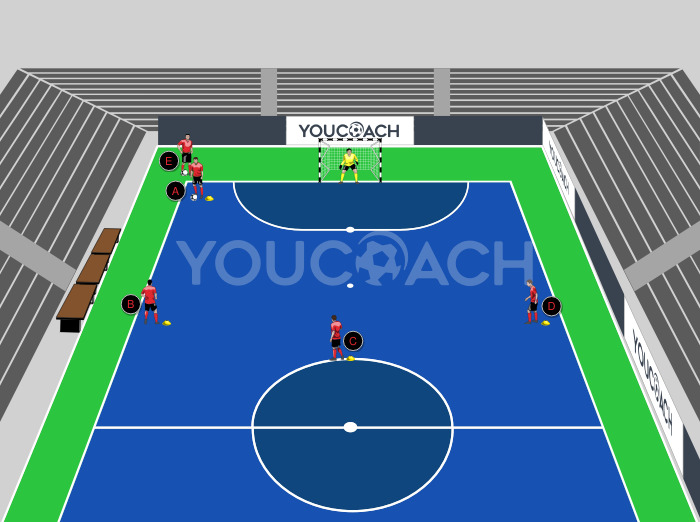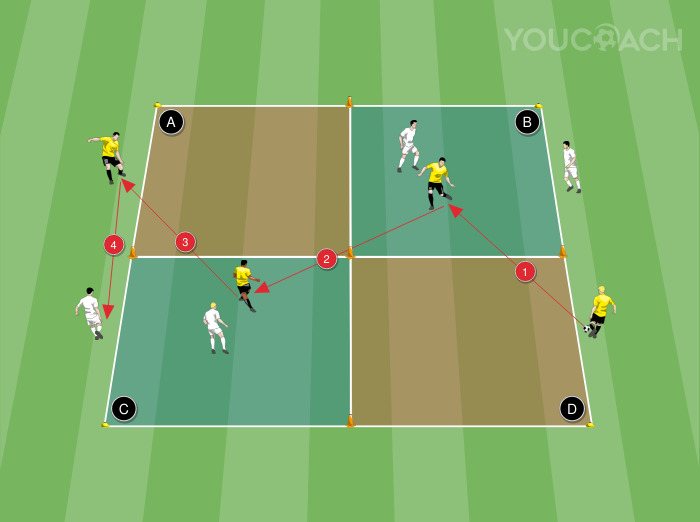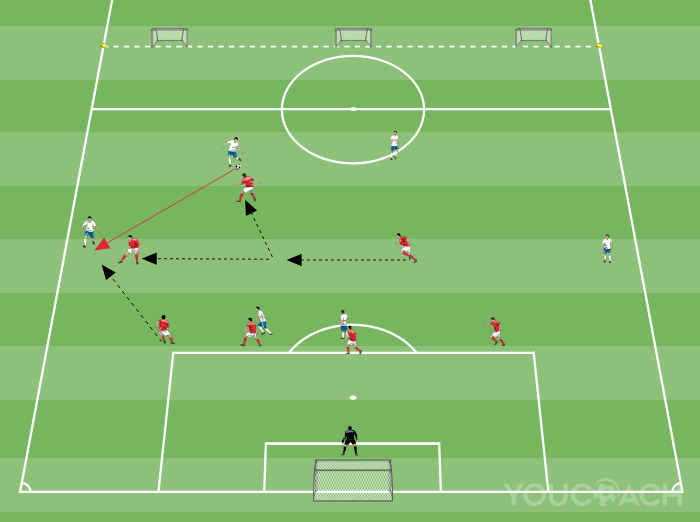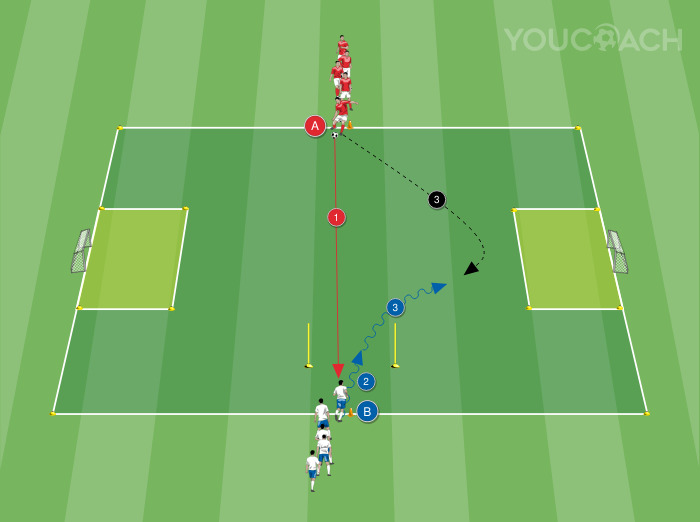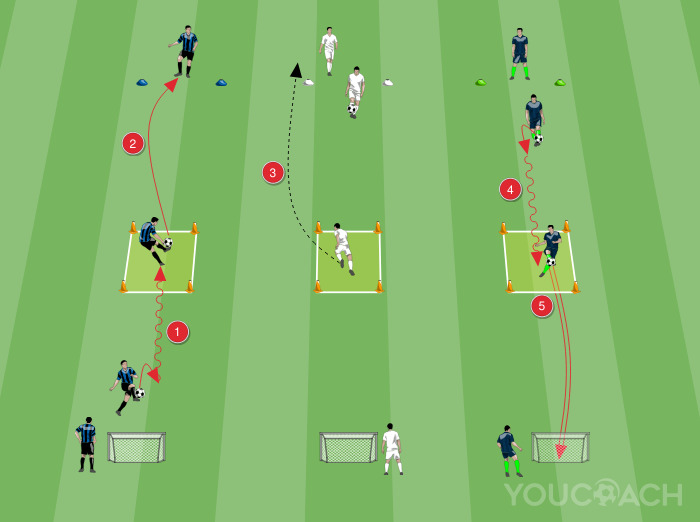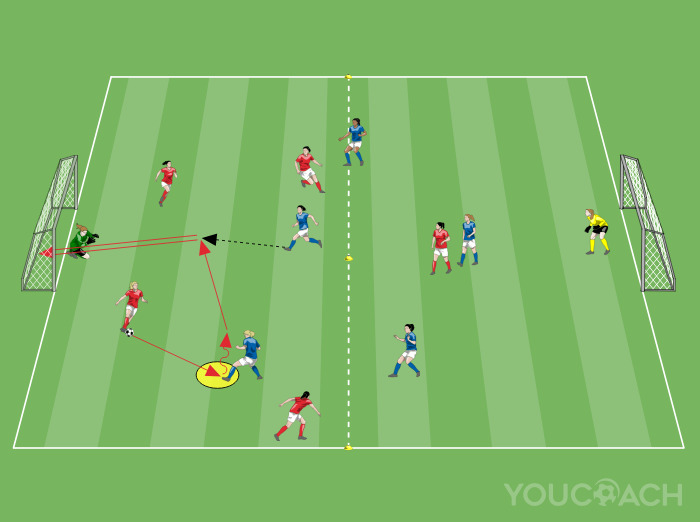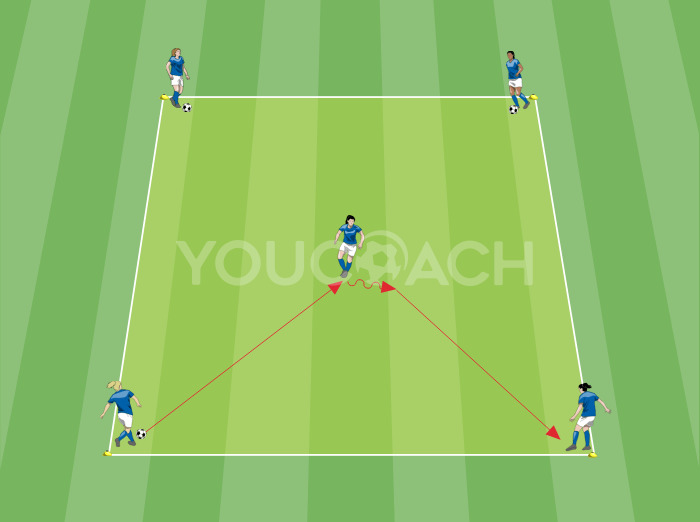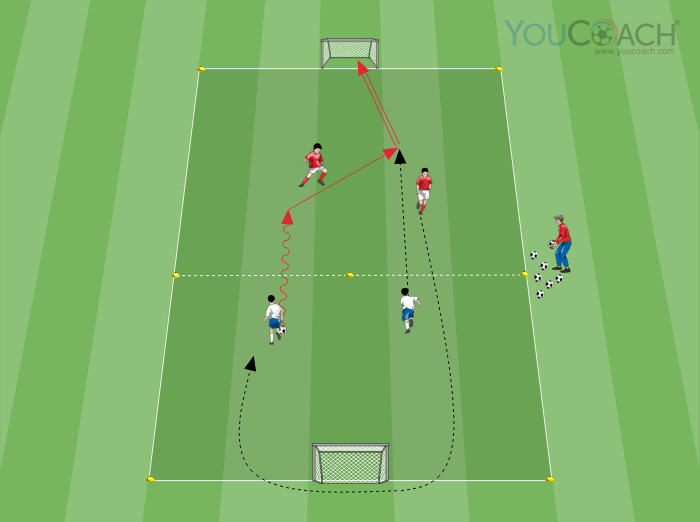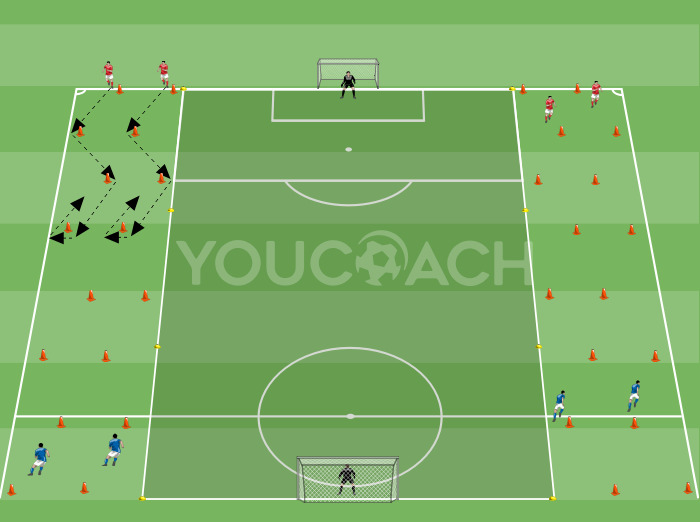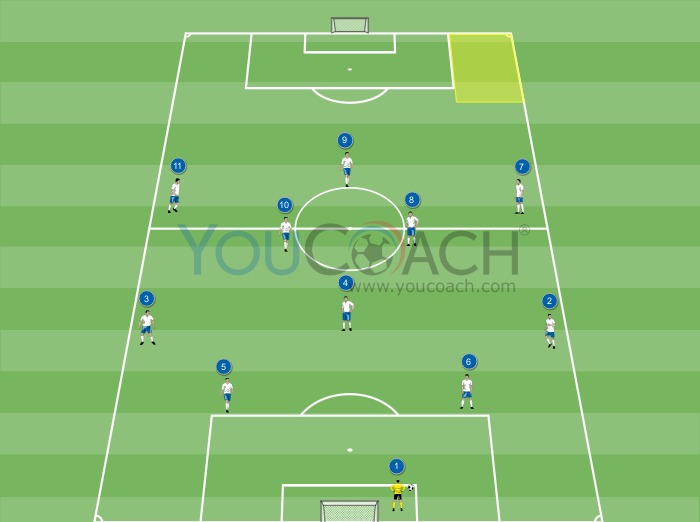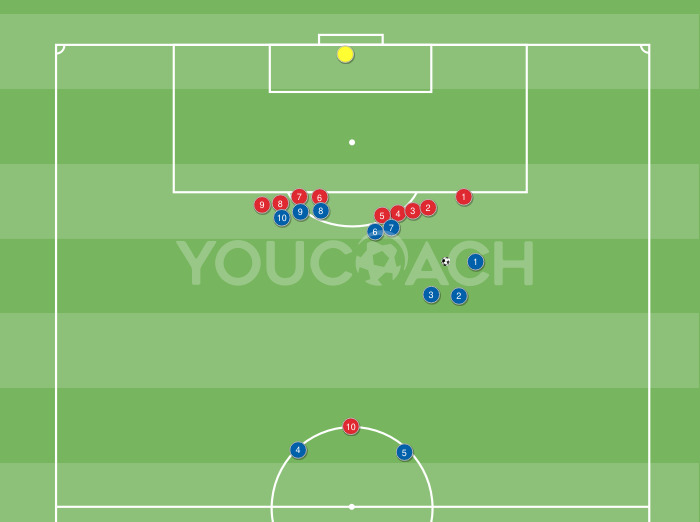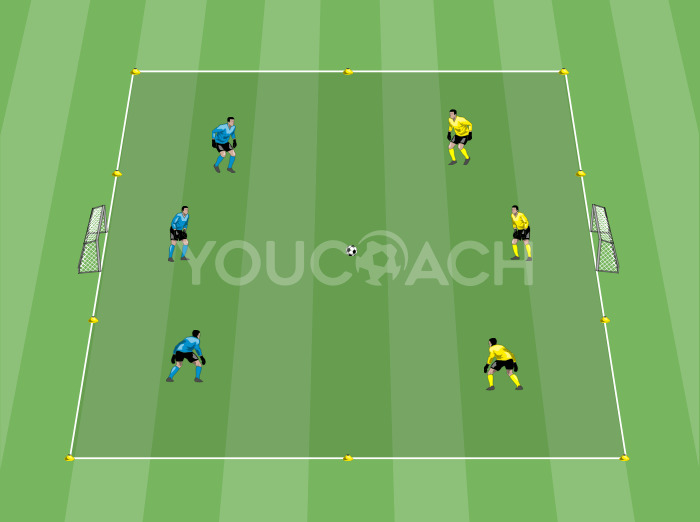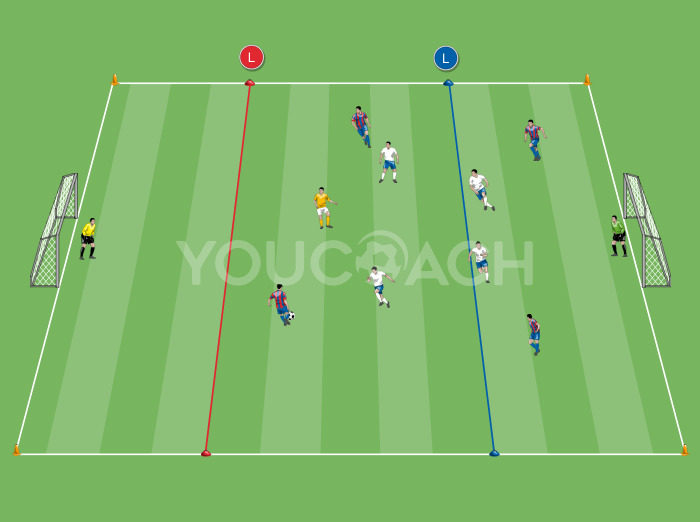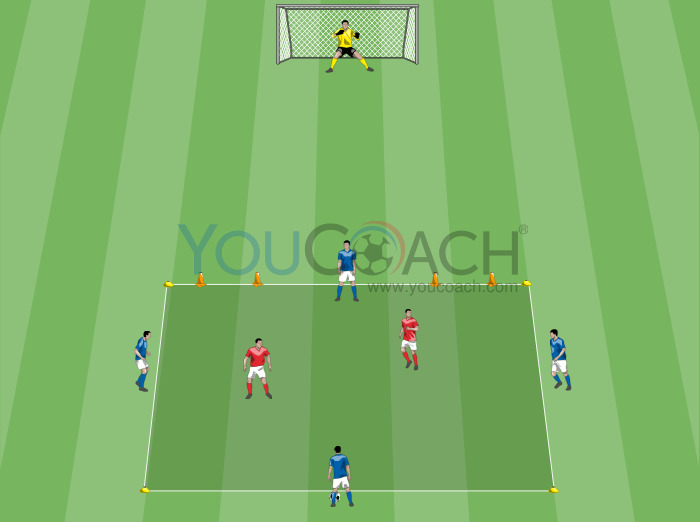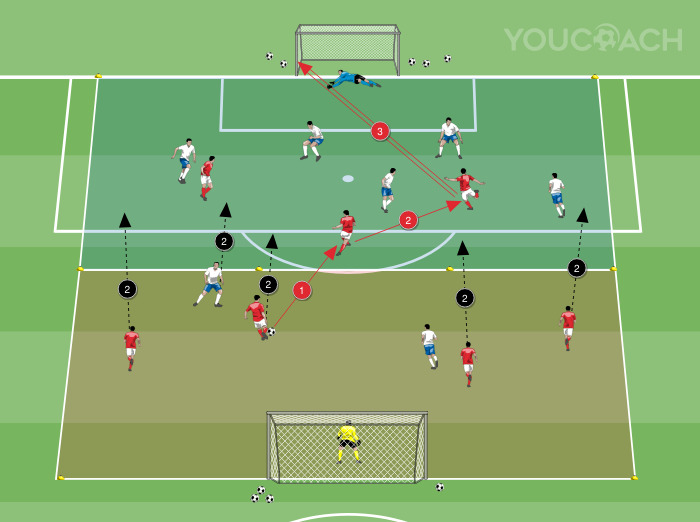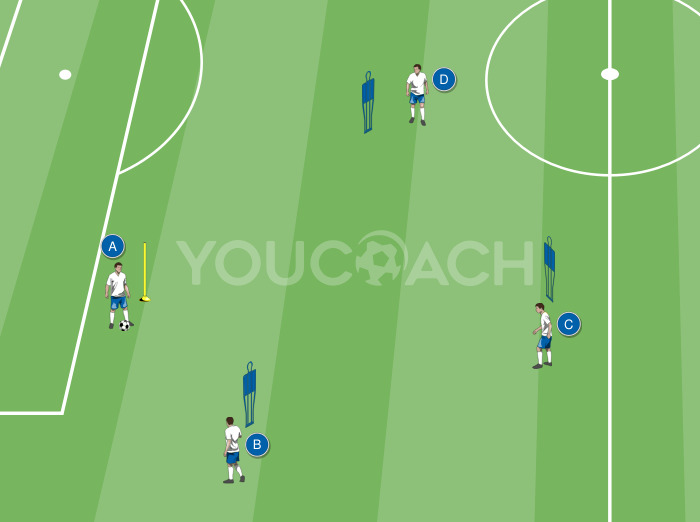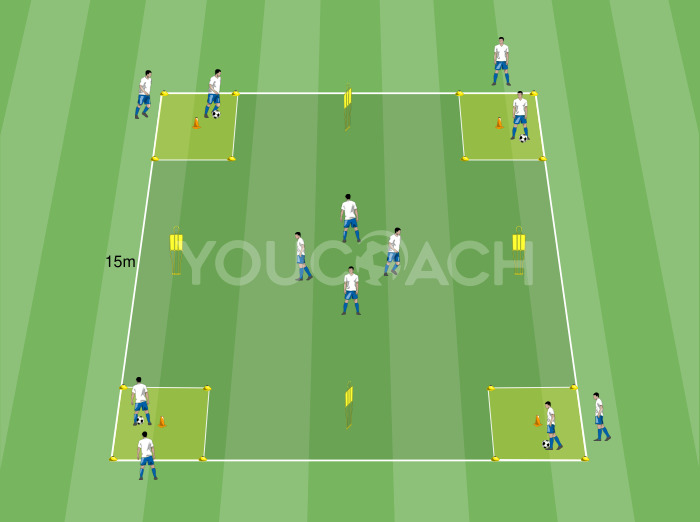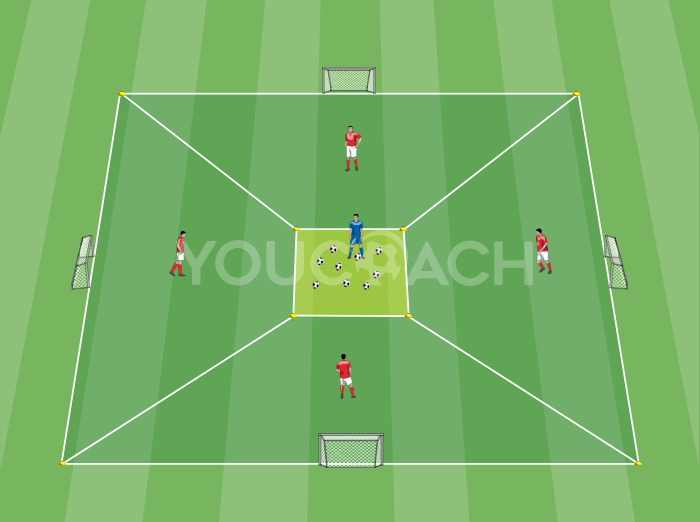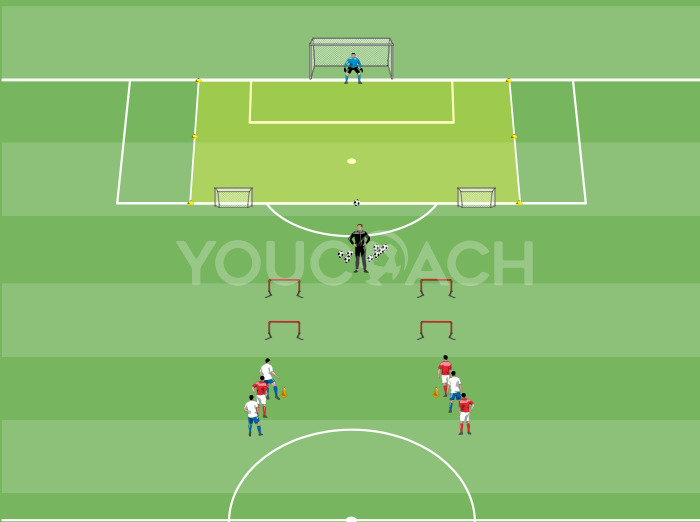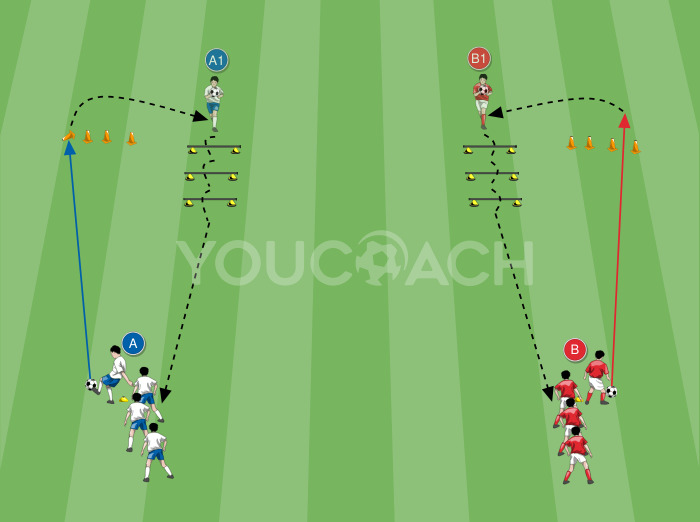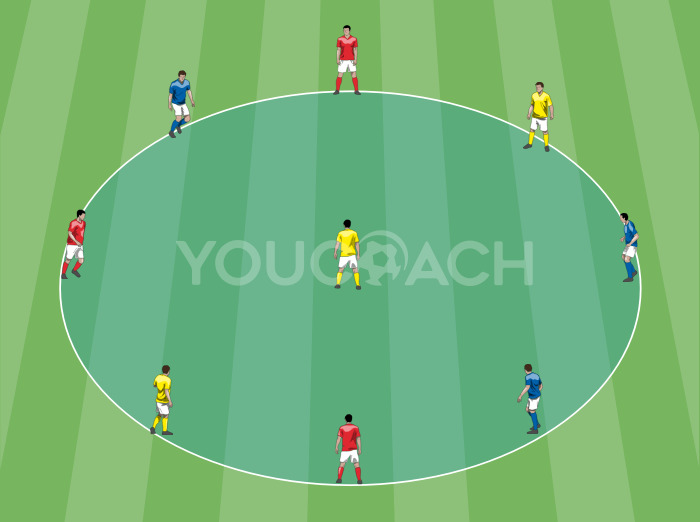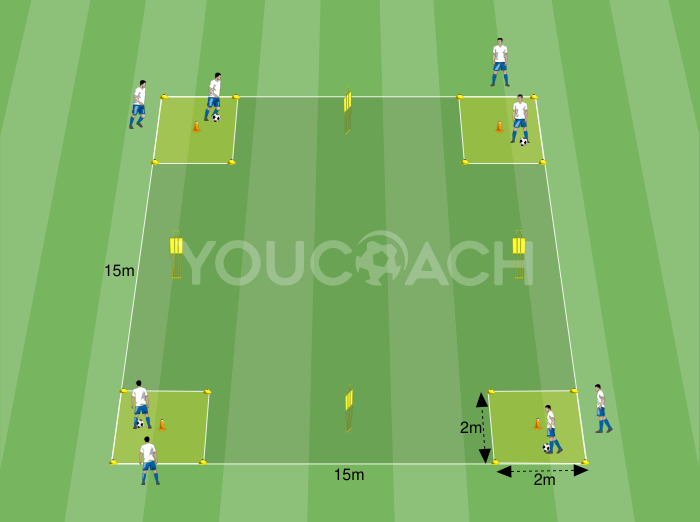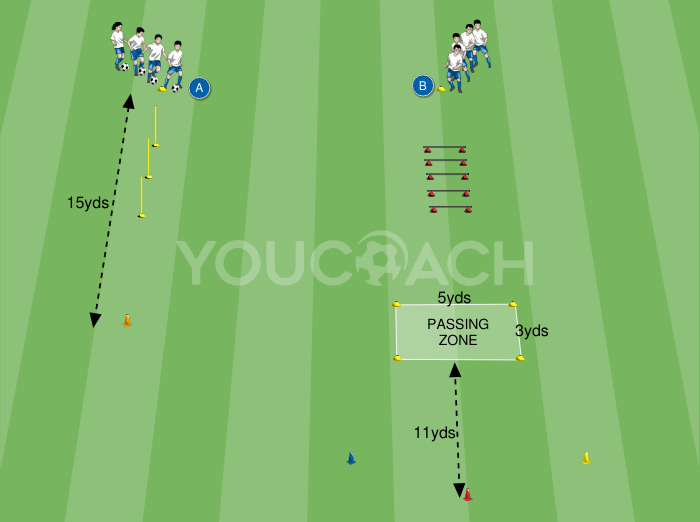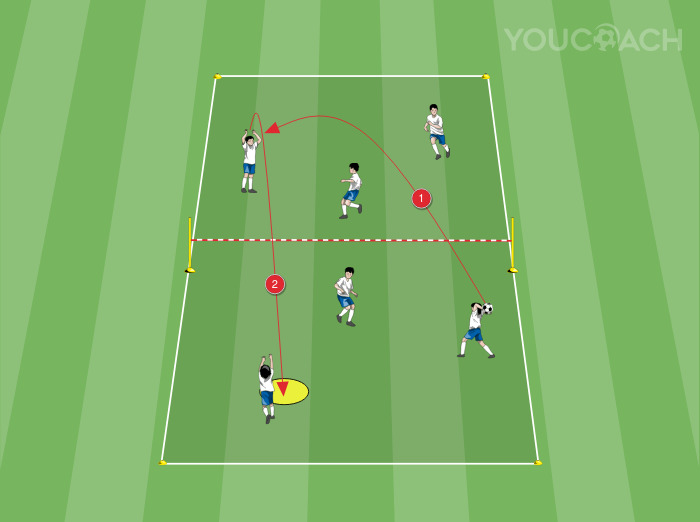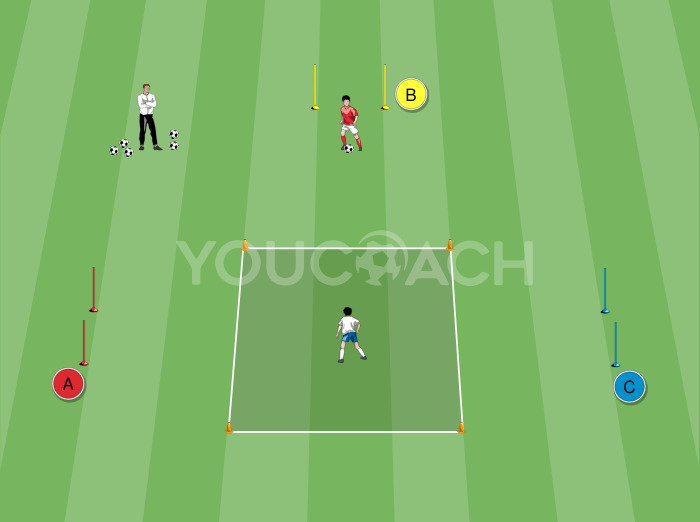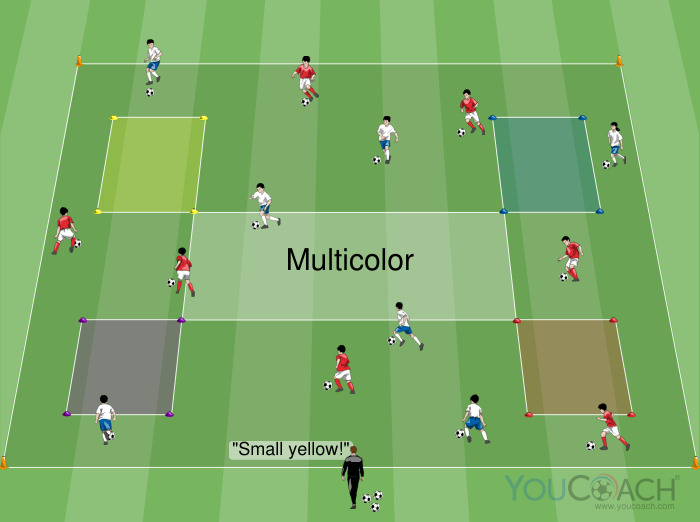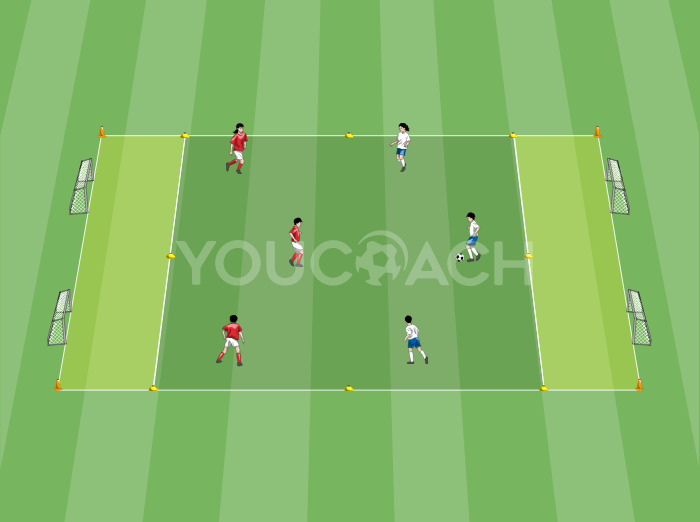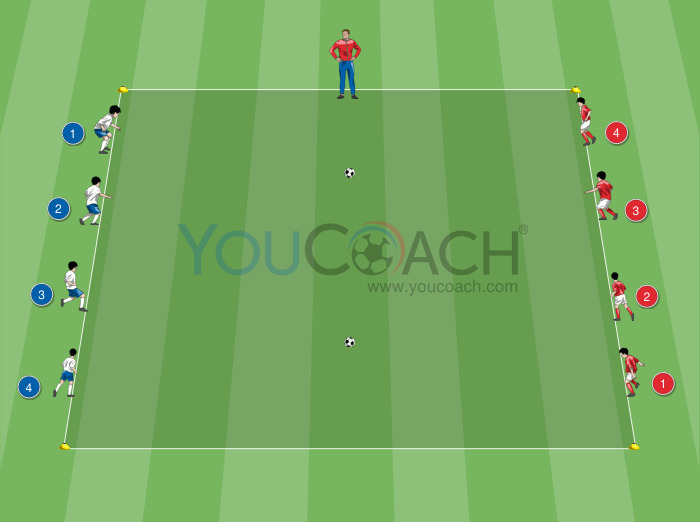4 v 4 line possessions: conditioning a unit

- Markers
- 4 vests
- Balls
- Playing Area: 40x30 meters / 44x33 yds
- Players: 8
- Duration: 22 minutes
- Series: 4 of 4 minutes each with 1'30'' of passive recovery between sets
| Summary | Secondary Objectives |
|---|---|
|
A stimulating exercise to train the team in possession of the ball to maintain constant mobility in order to be as unpredictable as possible to the opposing team |
Pass, Oriented control, Dribbling, Losing your marker, Positioning, Intercepting, Improvisation, Mobility, Change of position, Reading trajectories |
Use a playing area measuring 40×30 meters/44×33 yards divided with markers into three adjacent zones measuring 40×10 meters/44×11 yards (A, B, C in the picture). Form two teams of four players wearing jerseys. Position the red team players inside zone B and line up two white team players in zone A and two in zone C. Give a ball to a white player to start the exercise.
- After the coach's starting signal, the players on the white team must maintain possession by passing the ball between themselves and trying not to let the players on the red team steal it
- If the red defenders recover the ball or if it goes out of bounds, the action ends and restarts with new possession by the white team
- At the end of each series, reverse the roles of the teams
- Players on the defending team cannot leave their central zone (B) to try to intercept or steal the ball
- Players on the team in possession of the ball can move freely within the three zones
- Zones A and C must always be occupied by at least one player from the team in possession of the ball
- Players on the team in possession are free to decide whether to pass the ball or dribble it from one zone to another
- If the defenders recover the ball, the two teams quickly switch roles
- Encourage players on the team in possession of the ball to constantly change position so that they are unpredictable for their opponents
- Exercise that trains players to play around an opposing team with movements and passes in front of, inside, and beyond the line



